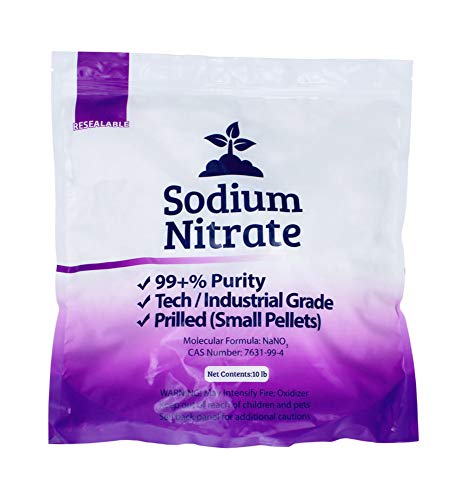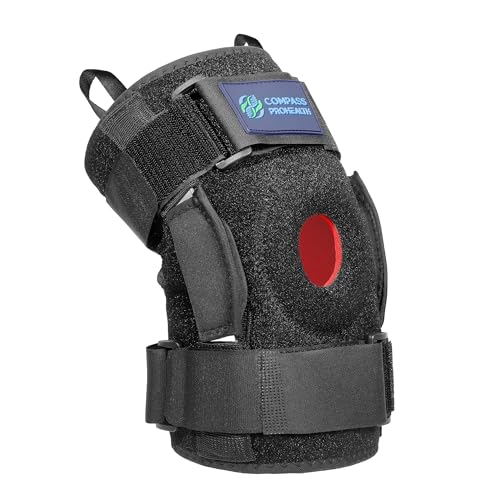Thank you @Reno Chris, having alerted me sufficiently in the video on poisonous and toxic elements I question dry crushing and sifting the crushed rocks. Will a chain mill handle damp or slurry material in an effort to control the dust? I have ball milled material wet but I am not familiar with using a chain mill. I know from experience that asbestos is toxic because it is a durable respirable fiber that you can easily inhale, but simply wetting it greatly reduces the risk.
You are using an out of date browser. It may not display this or other websites correctly.
You should upgrade or use an alternative browser.
You should upgrade or use an alternative browser.
Video question on the Reno Chris video How to crush gold ore to get the gold
- Thread starter 4metals
- Start date

Help Support Gold Refining Forum:
This site may earn a commission from merchant affiliate
links, including eBay, Amazon, and others.
When looking at a milling system you should always start with what are the big miners doing in this field and can their methods be adapted to the scale you wish to work at.
Pretty well all major mines start off with freshly mined rock laid out on the ROM(run of mine) pad next to the milling circuit.
Any oversize rocks are put aside for a specialist team to reduce in size enough that they can be handled by the milling circuit.
Usually the rocks are fed through a jaw crusher followed by a gyrator crusher and then a rod or ball mill, size screening is carried out between stages.
Smaller scale operators with reduced throughput often run jaw crushers of various settings in series and eliminate the gyratory crusher.
Prospectors with a lot of largish samples will often run a jaw crusher followed by a hammer type mill, this needs to be run dry and will generate a lot of dust.
Prospectors with smaller sized and lesser numbered samples often run a jaw crusher set to coarse milling and then use a jackhammer with a flat plate welded to a cut off piece of drilling steel to finely crush the sample in a piece of steel pipe with a flat plate welded across the bottom.
This generates much less dust than any rotary mill but dust will still be generated.
The only way to minimise dust is by using a ball mill or similar for the final comminution stage, jaw crushers can be used on wet feed but not rotary mills such as hammer type mills.
Deano
Pretty well all major mines start off with freshly mined rock laid out on the ROM(run of mine) pad next to the milling circuit.
Any oversize rocks are put aside for a specialist team to reduce in size enough that they can be handled by the milling circuit.
Usually the rocks are fed through a jaw crusher followed by a gyrator crusher and then a rod or ball mill, size screening is carried out between stages.
Smaller scale operators with reduced throughput often run jaw crushers of various settings in series and eliminate the gyratory crusher.
Prospectors with a lot of largish samples will often run a jaw crusher followed by a hammer type mill, this needs to be run dry and will generate a lot of dust.
Prospectors with smaller sized and lesser numbered samples often run a jaw crusher set to coarse milling and then use a jackhammer with a flat plate welded to a cut off piece of drilling steel to finely crush the sample in a piece of steel pipe with a flat plate welded across the bottom.
This generates much less dust than any rotary mill but dust will still be generated.
The only way to minimise dust is by using a ball mill or similar for the final comminution stage, jaw crushers can be used on wet feed but not rotary mills such as hammer type mills.
Deano
- Joined
- Aug 12, 2021
- Messages
- 1,514
I have successfully hammer milled damp rock. There are 3 ways to get a decent through put from a hammer mill;When looking at a milling system you should always start with what are the big miners doing in this field and can their methods be adapted to the scale you wish to work at.
Pretty well all major mines start off with freshly mined rock laid out on the ROM(run of mine) pad next to the milling circuit.
Any oversize rocks are put aside for a specialist team to reduce in size enough that they can be handled by the milling circuit.
Usually the rocks are fed through a jaw crusher followed by a gyrator crusher and then a rod or ball mill, size screening is carried out between stages.
Smaller scale operators with reduced throughput often run jaw crushers of various settings in series and eliminate the gyratory crusher.
Prospectors with a lot of largish samples will often run a jaw crusher followed by a hammer type mill, this needs to be run dry and will generate a lot of dust.
Prospectors with smaller sized and lesser numbered samples often run a jaw crusher set to coarse milling and then use a jackhammer with a flat plate welded to a cut off piece of drilling steel to finely crush the sample in a piece of steel pipe with a flat plate welded across the bottom.
This generates much less dust than any rotary mill but dust will still be generated.
The only way to minimise dust is by using a ball mill or similar for the final comminution stage, jaw crushers can be used on wet feed but not rotary mills such as hammer type mills.
Deano
1) dry
2) Placed in a bottom perforated 55 gallon, or whatever size you need container. Spray down, then allow to drip for at least 10 hours. You basically want a minimal surface coat of water. Just enough to reduce the dust, but doesn't completely eliminate it, but still light years ahead of completely dry.
3) Add enough water to create a thin slurry. This reduces dust 100%, and allows for good wetting prior to mixing with more water, then running over a classifier, sluice, table. Enough water is added to allow the thin slurry to flow through the internal classifier. Not enough water will create clay balls, or a doughy consistency mud. A water port can be threaded into the side plate, close to the central shaft, as this will minimize damage to the wear soft fitting.
- Joined
- Aug 12, 2021
- Messages
- 1,514
I also want to add that an air filter system will reduce dust significantly on dry impacting. I have used a 2 drum system. The first drum has a simple in/out port. The in port angled a little, creating a swirl internally. This will drop the larger particles. The second drum has again an in/out port, a shop vacuum connected to the out port. A sloped conical bottom, with a tire inner tube clamped around a straight piece of tubing, will allow the rubber inner tube to suck tight, but release material into a container upon stopping the shop vac. There are also a plethora of auto cycling dust collectors, but they are many thousands of US dollars. For some reason, my I-phone will not allow me to send pictures to my lap top, or I would share pics.When looking at a milling system you should always start with what are the big miners doing in this field and can their methods be adapted to the scale you wish to work at.
Pretty well all major mines start off with freshly mined rock laid out on the ROM(run of mine) pad next to the milling circuit.
Any oversize rocks are put aside for a specialist team to reduce in size enough that they can be handled by the milling circuit.
Usually the rocks are fed through a jaw crusher followed by a gyrator crusher and then a rod or ball mill, size screening is carried out between stages.
Smaller scale operators with reduced throughput often run jaw crushers of various settings in series and eliminate the gyratory crusher.
Prospectors with a lot of largish samples will often run a jaw crusher followed by a hammer type mill, this needs to be run dry and will generate a lot of dust.
Prospectors with smaller sized and lesser numbered samples often run a jaw crusher set to coarse milling and then use a jackhammer with a flat plate welded to a cut off piece of drilling steel to finely crush the sample in a piece of steel pipe with a flat plate welded across the bottom.
This generates much less dust than any rotary mill but dust will still be generated.
The only way to minimise dust is by using a ball mill or similar for the final comminution stage, jaw crushers can be used on wet feed but not rotary mills such as hammer type mills.
Deano
I have to email pictures to my computer at times if I need a picture on the computer quick. Other wise I connect the phone to it through a USB cord.For some reason, my I-phone will not allow me to send pictures to my lap top, or I would share pics.
Southfork
Well-known member
My jaw crusher makes little dust, but my chain mill is like a sandstorm. The outlet is into a water filled bucket it helps a little, but I need to extend the outlet maybe with a long stocking that just touches the water. If there's no breeze a dust cloud forms many feet above my work area. I'm afraid a shop vac would steal some of my micro gold in the mills present configuration.

$25.99 ($3.71 / Count)
WORKPRO 7-Piece Jewelers Pliers Set, Jewelry Making Tools Kit with Easy Carrying Pouch (Blue)
GreatStar Tools

$83.78
$115.00
Petroleum Refining: Technology, Economics, and Markets, Sixth Edition
Woodville Books

$19.99
$24.99
PAXCOO Jewelry Making Supplies Kit with Jewelry Tools, Jewelry Wires and Jewelry Findings for Jewelry Repair and Beading
Paxcoo Direct

$7.49 ($0.15 / Count)
$7.99 ($0.16 / Count)
Beauticom 3g/3ml (0.1 Fl Oz) Round Clear Plastic Jars with Round Top Lids for Creams, Lotions, Powders, Glitters, and more... (Color: Clear Lid, Quantity: 50 Pieces)
Beauticom

$159.99
5000ml Beaker, Low Form Griffin, Borosilicate 3.3 Glass, Double Scale, Graduated, Karter Scientific 247R8 (Case of 4)
Lake Charles Manufacturing

$81.99
$89.99
SanDisk 1TB Extreme microSDXC UHS-I Memory Card with Adapter - Up to 190MB/s, C10, U3, V30, 4K, 5K, A2, Micro SD Card- SDSQXAV-1T00-GN6MA, Gold/Red
Exceptional Deal (We record SN)

$223.49 ($0.06 / Ounce)
50 lb Sodium Nitrate Fertilizer 99+% Pure Chile Saltpeter Gold Metal Refining Industrial Grade Glass Pottery Enamels
Duda Energy

$85.86
$171.00
Catalysis in the Refining of Fischer-Tropsch Syncrude (Catalysis Series, Volume 4)
Basi6 International
The method used in this video collects the larger pieces of Gold in the crushed ore. I would assume that the fines which are not caught potentially hold values as well but they would only be recovered by leaching. I guess the answer for the small rock hound is to save all of the fines and eventually, when enough have been accumulated, set up some sort of leach process if the fire assay of the fines shows enough Gold to go after.I'm afraid a shop vac would steal some of my micro gold in the mills present configuration.
- Joined
- Aug 12, 2021
- Messages
- 1,514
I have taken the phone to a Verizon store to try and figure out what is going on. I can email pictures to myself in the store, but when I get home, and next to my laptop and router (great wifi ), I cannot email a picture to myself. I can send a picture in a text to somebody else, just my phone won't send to my laptop/email. It may be because of the older MacBook Pro verses communicating with the iPhone 15. I will see what happens when I take pictures with my iPad.I have to email pictures to my computer at times if I need a picture on the computer quick. Other wise I connect the phone to it through a USB cord.

































































